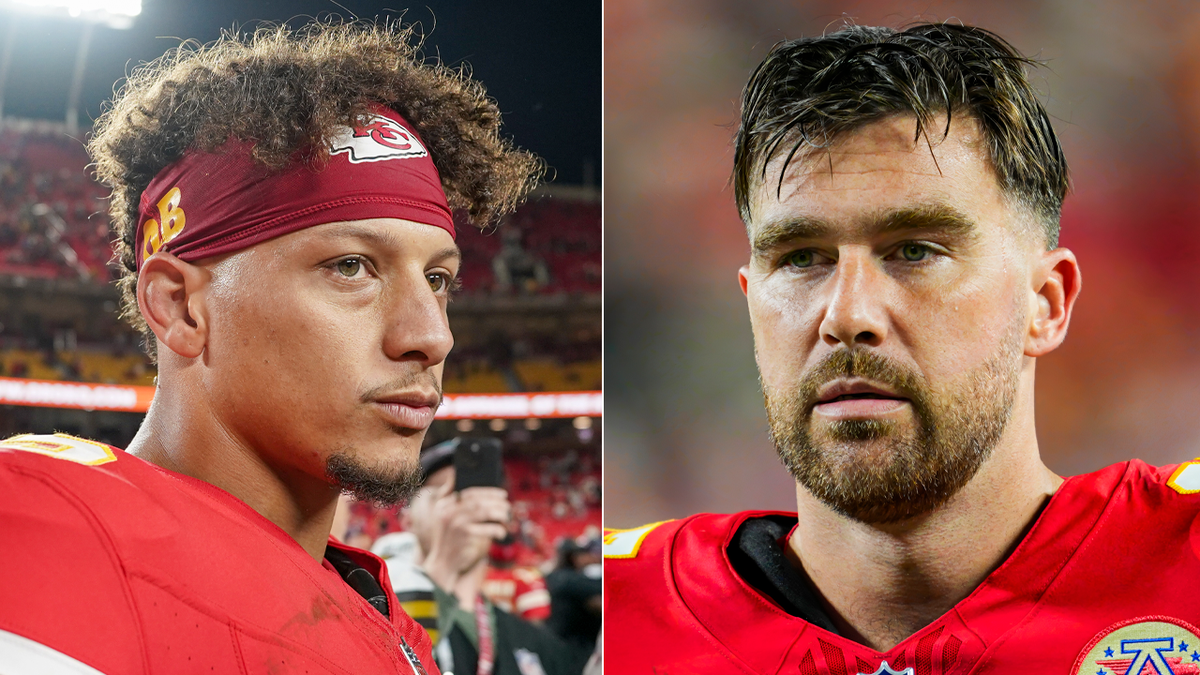It’s a mystery that looms larger with each passing NFL season: Will Travis Kelce return to being that unstoppable, spectacular tight end who defined an era of Kansas City Chiefs dominance, or has time finally caught up with him, threatening to leave Patrick Mahomes and the Chiefs’ offense scrambling for new answers?
The question isn’t born from a single bad game or even a disappointing season. It’s rooted in the subtle but undeniable signs of decline, the shifting narratives, and the looming specter of age — Kelce will turn 36 during the 2025 season. And while he remains a focal point in Kansas City’s offense and one of Mahomes’ most trusted weapons, there’s no denying that the performances which once seemed automatic are becoming a little more uncertain.
Kelce’s career has been nothing short of historic. A tight end with the route-running precision of a wide receiver and the physicality to dominate in traffic, he redefined the position. For years, he was not just the best tight end in football, he was the engine of a dynastic offense, capable of bailing out Mahomes on third-and-long, igniting rallies in championship games, and consistently embarrassing defenders with his footwork and football IQ.
From 2016 to 2022, Kelce posted over 1,000 yards in every season, an unheard-of streak for his position. He was the first tight end in NFL history to achieve seven consecutive 1,000-yard seasons. But 2023 hinted at a shift. The production was still there, but it wasn’t as smooth. The explosive plays seemed fewer. The separation against younger, faster defenders was narrower. The drop in yards per catch — and even the eye test — suggested that while Kelce’s football brain remained elite, his body might be inching out of its prime.
Then came the 2024 season. By most standards, it was still strong — just not “Kelce strong.” He missed a few games, something that had rarely happened in the past. He had moments of brilliance, such as clutch catches and red zone domination, but also stretches where he disappeared. For a tight end who had been the focal point of every defensive game plan for years, being invisible in quarters at a time raised eyebrows.
Still, it’s unfair to hold Kelce to ordinary standards. Any tight end putting up 800+ yards and scoring in key moments would be lauded. But for Kelce, whose entire legacy is built on consistency and dominance, anything less feels jarring. Especially when viewed through the lens of his relationship with Mahomes.
Their connection is one of the most iconic QB-pass catcher duos in modern NFL history. Mahomes’ improvisational magic and Kelce’s field awareness have combined for highlight-reel plays that defy logic. Kelce doesn’t just run routes — he finds space, and Mahomes finds him, even when chaos breaks loose. The pair thrived in the unscripted, and their chemistry was a weapon in itself. So when Kelce falters, even briefly, it feels like more than just a player slipping — it feels like an entire offensive identity being called into question.
That’s where the uncertainty becomes more than just speculation. Mahomes is entering his prime, arguably the best quarterback in the league with years of dominance ahead. The Chiefs have built around him — changing receivers, upgrading their offensive line, innovating schemes — but Kelce has always been the constant. He’s the guy Mahomes trusts on third and five, the guy defenses double but still can’t contain. If Kelce starts to fade, the implications are massive.
Mahomes has already shown frustration at times with the inconsistency of the Chiefs’ wide receiver corps. In 2023 and 2024, Kansas City’s young receivers struggled with drops, timing issues, and failed to step up as legitimate threats. Kelce’s decline, if real and irreversible, would remove the one dependable target Mahomes has leaned on for years. It would turn the offense from dynamic and multi-dimensional to something more vulnerable, reliant on potential rather than proven excellence.
And the tight end position isn’t easily replaceable. Great tight ends are rare — ones who understand spacing, blocking schemes, and can win contested catches are even rarer. Kelce’s replacement, when that time comes, will almost certainly be a drop-off. Not just statistically, but in chemistry, timing, and leadership. Kelce isn’t just a physical presence — he’s the spiritual center of that huddle.
Of course, the flip side of the coin is that Kelce might not be done. He has repeatedly defied expectations, playing through pain, proving doubters wrong, and showing up in the biggest moments. His playoff performances have consistently reminded people that when it matters most, he rises to the occasion. In the 2023 postseason, for example, Kelce silenced critics by dominating in crunch time, showing he could still be the same elite target who changes the course of games.
There’s also the argument that Kelce’s apparent decline is less about him and more about circumstances. The Chiefs offense has undergone changes in recent years — scheme tweaks, personnel shifts, and the natural growing pains of trying to stay ahead of defensive adjustments. Kelce’s numbers may have dipped, but his role may have shifted. He’s become more of a short-yardage specialist, a red-zone weapon, and a blocker when needed. Perhaps the Chiefs are preserving him for the postseason. Perhaps he’s adapting, evolving his game rather than declining.
Still, the doubt lingers. Because once age becomes part of the conversation, it rarely goes away. It begins as a whisper, becomes a headline, and eventually settles into reality. Football is a brutal sport — physically, mentally, emotionally. And for players in their mid-30s, especially at a position that demands so much physical contact, the cliff can come fast.
So, what happens next?
If Kelce bounces back in 2025 with another 1,000-yard season, another playoff run full of clutch catches and touchdown dances, the narrative will shift again. He’ll be praised for his resilience, hailed as timeless. The doubts will be pushed back, and the Chiefs’ offense will once again run through that magical Mahomes-Kelce connection.
But if the decline accelerates — if his legs feel a step slower, if the separation just isn’t there, if he struggles to stay healthy — then the mystery may be resolved in the harshest of ways. Mahomes will be forced to look elsewhere. The offense will change. The Chiefs will need to find a new identity.
Kelce’s future also has broader implications. He’s a larger-than-life figure now, with a media career looming and off-the-field ventures flourishing. His visibility outside the sport has grown, and with it, the temptation to step away before the inevitable drop-off becomes too visible. He’s hinted at the toll the game takes. He knows his legacy is secure. Three Super Bowl rings, countless accolades, and a first-ballot Hall of Fame induction await him. He doesn’t have to play much longer.
But legacy, for many elite athletes, is about leaving on the right terms. And for Kelce, that might mean giving it one last shot to be spectacular — to silence the murmurs, to give Mahomes one more season of brilliance, and to walk away on his own terms.
Until then, the NFL watches. The Chiefs fanbase holds its breath. And Mahomes, ever the competitor, surely hopes his greatest weapon still has a few more knockout punches left. Because without Kelce at his best, the path to another Super Bowl suddenly looks a lot more uncertain.
It’s a mystery still unfolding — whether Travis Kelce will once again rise to greatness, or whether the twilight of his career will force the Chiefs to find greatness elsewhere. Either way, the story isn’t finished. But the next chapter may be the most telling yet.



